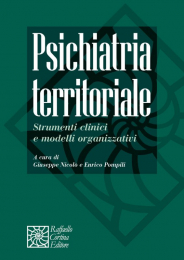|
INTRODUCTION
1. Translational Process; 2. Scientific Method; 3. Basic research
PRE-CLINICAL: DISCOVERY AND DEVELOPMENT
4. Overview of preclinical research; 5. Defining the problem to solve; 6. Types of problems; 7. Types of Interventions; 8. Drug discovery; 9. Drug safety; 10. Device discovery; 11. Device prototyping; 12. Device classification; 13. Device testing; 14. Diagnostic testing; 15. Other product types; 16. Procedural technique development; 17. Behavioral intervention
CLINICAL: FUNDAMENTALS
18. Introduction to clinical research: What is it? Why is it needed?; 19. The question: Types of research questions and how to develop them; 20. Study population: Who and why them?; 21. Outcome measurements: What data is being collected and why?; 22. Optimizing the question: Balancing significance and feasibility
STATISTICAL PRINCIPLES
23. Common issues in analysis; 24. Basic statistical principles; 25. Distributions; 26. Hypotheses and error types; 27. Power; 28. Regression; 29. t-test; 30. Chi-square; 31. Analysis of variance; 32. Correlation; 33. Biases; 34. Basic science statistics
CLINICAL: STUDY TYPES
35. Design principles: Hierarchy of study types; 36. Case series: Design, measures, classic example; 37. Case-control study: Design, measures, classic example; 38. Cohort study: Design, measures, classic example; 39. Cross-section study: Design, measures, classic example; 40. Longitudinal study: Design, measures, classic example; 41. Clinical trials: Design, measures, classic example; 42. Meta-analysis: Design, measures, classic example; 43. Cost-effectiveness analysis: Design, measures, classic example; 44. Diagnostic test evaluation: Design, measures, classic example; 45. Reliability study: Design, measures, classic example; 46. Surveys and questionnaires: Design, measures, classic example; 47. Qualitative methods and mixed methods
CLINICAL TRIALS
48. Randomized control: Design, measures, classic example; 49. Nonrandomized control: Design, measures, classic example; 50. Historical control: Design, measures, classic example; 51. Cross-over: Design, measures, classic example; 52. Withdrawal studies: Design, measures, classic example; 53. Factorial design: Design, measures, classic example; 54. Group allocation: Design, measures, classic example; 55. Large, pragmatic: Design, measures, classic example; 56. Equivalence and noninferiority: Design, measures, classic example; 57. Adaptive: Design, measures, classic example; 58. Randomization: Fixed or adaptive procedures; 59. Blinding: Who and how?; 60. Multicenter considerations; 61. Registries; 62. Phases of clinical trials; 63. IDEAL Framework; 64. Artificial Intelligence; 65. Patient perspectives
CLINICAL: PREPARATION
66. Meaningful outcome measurements; 67. Sample size; 68. Budgeting; 69. Ethics and review boards; 70. Regulatory considerations for new drugs and devices; 71. Funding approaches; 72. Subject recruitment; 73. Data management; 74. Quality control; 75. Statistical software; 76. Report forms: Harm and Quality of Life; 77. Subject adherence; 78. Monitoring committee in clinical trials
REGULATORY
79. FDA overview; 80. IND; 81. New drug application; 82. Device pathways; 83. Radiation-emitting electronic products; 84. Combination products; 85. Cosmetics; 86. CMC and GxP; 87. Non-US regulatory; 88. Post-Market Drug Safety Monitoring; 89. Post-Market Device Safety Monitoring
CLINICAL IMPLEMENTATION
90. Implementation Research; 91. Design and analysis; 92. Mixed-methods research; 93. Population- and setting-specific implementation
PUBLIC HEALTH
94. Public Health; 95. Epidemiology; 96. Good questions; 97. Population- and environmental-specific considerations; 98. Law, policy, and ethics; 99. Healthcare institutions and systems; 100. Public health institutions and systems
|




